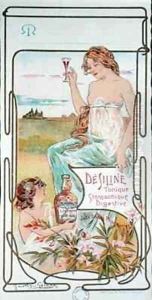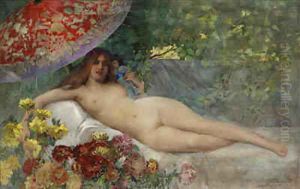Gaston Gerard Paintings
Gaston Gérard was a French painter born on January 29, 1859, in Nantes, France. He was primarily known for his work in the academic tradition, focusing on portraits, genre scenes, and historical paintings. Gérard's artistic journey began at a young age, influenced by the rich cultural atmosphere of his hometown. He went on to study at the École des Beaux-Arts in Paris, where he was a pupil of renowned artists such as William-Adolphe Bouguereau and Tony Robert-Fleury.
Gérard's style was characterized by a meticulous attention to detail, a classical approach to composition, and a strong emphasis on realism, typical of the academic art of the time. He gained recognition for his technical skill and his ability to capture the essence of his subjects, which ranged from high society figures to scenes of everyday life. His works were exhibited at the Paris Salon, an annual art event that was the official art exhibition of the Académie des Beaux-Arts in Paris. Gérard's submissions to the Salon helped him to establish his reputation and attract a clientele for his portrait work.
Despite the rise of Impressionism and other avant-garde movements during his career, Gérard remained committed to the academic style. He was a conservator of traditional artistic values during a time of significant change in the art world. While he may not have achieved the same level of fame as some of his contemporaries, his work was respected for its craftsmanship and adherence to classical standards.
Gaston Gérard's career spanned several decades, during which he produced a large body of work that included not only portraits and genre scenes but also religious and historical paintings. He was a member of various artistic societies and received several awards and honors for his contributions to French art. Gérard passed away on May 16, 1929, in Paris. Today, his works can be found in private collections and museums across France, serving as examples of the academic art that dominated the French art scene in the late 19th and early 20th centuries.

